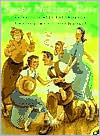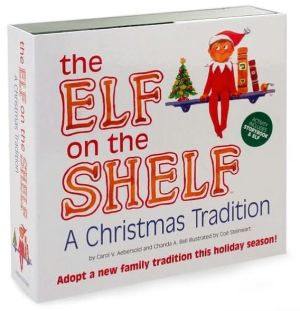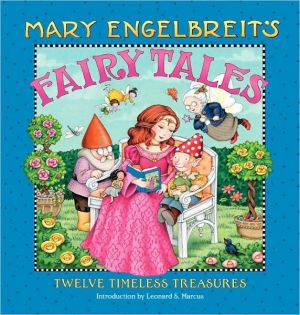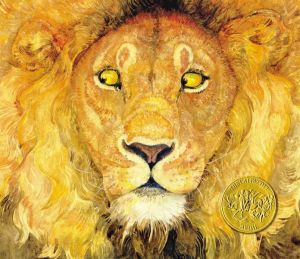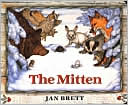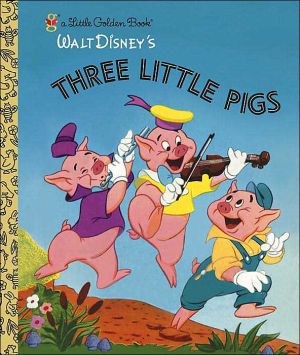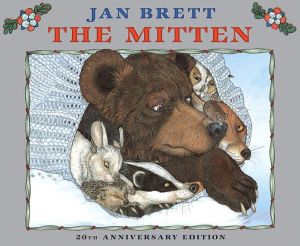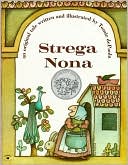Smoky Mountain Rose: An Appalachian Cinderella
I reckon ye heard o' Cinderella, but lemme tell you a story 'bout a sweet li'l thing named Rose? Set in the Appalachian Mountains and told in a lilting dialect that just begs to be read aloud, this is a unique and lively adaptation of the traditional Cinderella story. Complete with an enchanting protagonist, a glass slipper, and a fairy godmother who just happens to be a hog, Smoky Mountain Rose is a joy to read again and again.\ \ \ In this variation on the Cinderella...
Search in google:
In this variation on the Cinderella story, based on the Charles Perrault version but set in the Smoky Mountains, Rose loses her glass slipper at a party given by the rich feller on the other side of the creek.Publishers WeeklySchroeder (Minty; Carolina Shout!) bases this "Appalachian Cinderella" on Perrault's well-known version, but his rollicking language could belong only to America's Smoky Mountains. "Now lis'en," begins the narrator, and what unfolds is a telling of the familiar story as fresh as a spring bluebonnet and as unexpected as its fairy godmother hog. The strong voice of the backwoods storyteller is loud and clear throughout: the wicked stepsisters are "so mean they'd steal flies from a blind spider," and when Seb ("this real rich fellermade his fortune in sowbellies and grits") tries to put the glass slipper on the stepsister's huge foot, it is "like tryin' to stretch a li'l bitty sausage skin over a side o' beef." Sneed's (The Fly Flew In) sun-bleached watercolors feature exaggerated faces, angular forms and skewed, almost fish-eye lens perspectivesthe stepsisters, for example, have elongated limbs and enormous feet. Some children may have difficulty decoding the phonetic renderings of the dialect ("I reckon it's hard on ye, not havin' a ma... Would ye lak me to git hitched again?"), but if read aloud, this Cinderella will make readers "happy as a pig in a peanut patch." Ages 5-9. (May)
\ Publishers Weekly\ - Publisher's Weekly\ Schroeder (Minty; Carolina Shout!) bases this "Appalachian Cinderella" on Perrault's well-known version, but his rollicking language could belong only to America's Smoky Mountains. "Now lis'en," begins the narrator, and what unfolds is a telling of the familiar story as fresh as a spring bluebonnet and as unexpected as its fairy godmother hog. The strong voice of the backwoods storyteller is loud and clear throughout: the wicked stepsisters are "so mean they'd steal flies from a blind spider," and when Seb ("this real rich fellermade his fortune in sowbellies and grits") tries to put the glass slipper on the stepsister's huge foot, it is "like tryin' to stretch a li'l bitty sausage skin over a side o' beef." Sneed's (The Fly Flew In) sun-bleached watercolors feature exaggerated faces, angular forms and skewed, almost fish-eye lens perspectivesthe stepsisters, for example, have elongated limbs and enormous feet. Some children may have difficulty decoding the phonetic renderings of the dialect ("I reckon it's hard on ye, not havin' a ma... Would ye lak me to git hitched again?"), but if read aloud, this Cinderella will make readers "happy as a pig in a peanut patch." Ages 5-9. (May)\ \ \ \ \ Children's Literature\ - Donna Freedman\ This picture book is written entirely in dialect, as though a storyteller were giving us an Appalachian spin on the old Cinderella legend. (An author's note takes pains to mention the ancient origins of this enduring fairy tale.) The story is briskly told, and Sneed's watercolors are oddly proportioned yet somehow just right. Maybe his style has something to do with storytellers who "stretch" the truth?\ \ \ Children's Literature\ - Jan Lieberman\ "Now lis'en while I tell you a tale 'bout Rose, a sweet I'il thing, always lookin' out for others and takin' care of sick critters, and the like. She and her trapper pa lived smack in the heart o' the Smoky Mountains. Before the huckleberries was fit for pickin', the trapper got himself hitched for the second time. That's when the trouble started a-brewin'." This is an Appalachian Cinderella story that just tumbles off the tongue. What a difference the setting makes for the symbols: a muskmelon is the "wagon," the fairy godmother is a hog, etc. Enjoy the language and the unique perspectives of the illustrations.\ \ \ \ \ School Library JournalK-Gr 4Schroeder has taken the classic Perrault fairy tale and recast it "smack in the heart o' the Smoky Mountains." He begins his retelling with the directive, "Now lis'en," and continues to relate the familiar events in lilting mountain dialect with plenty of homespun humor. Seb, the love interest here, is a "real rich fellermade his fortune in sowbellies and grits." Rose's transformation takes place through intervention of a kindhearted, articulate hog. The tale concludes, "To this day, Rose and Seb are still livin' there, and folks reckon they're `bout the happiest twosome in all o' Tarbelly Creek," giving the story a contemporary bent. Everyone knows what's going to happen, but getting there is half the fun. Sneed's slick, stylized watercolors seem at first to be out of sync with the down-home narrative, but it quickly becomes clear that the disparate union is a successful one. The paintings are realistically rendered but slightly distortedfigures are elongated and angular, features exaggerated, and perspectives askew. People are clad in fashions of the 1940s and the lush Appalachian landscape is always in evidence. The fanciful, but decidedly quirky artwork effectively informs readers, in case they didn't already know it, that there's magic in them thar hills. An appealing all-American addition to the canon of "Cinderella" variants.Luann Toth, School Library Journal\ \ \ \ \ Kirkus ReviewsSchroeder's version of this tale is based directly on the familiar 17th-century Perrault tale, but written in an Appalachian dialect and placed "smack in the heart o' the Smoky Mountains." Cinderella—Rose in this tale—is the gentle daughter of a father who dies not long after he remarries. Her stepsisters and stepmother are cut from the usual bitter cloth, but there are some twists: The role of the fairy godmother is played by a huge hog, and the last image is of Rose (still wearing the slippers) and her handsome feller in old age, rocking on their porch swing. The watercolor illustrations owe much to the powerful, elongated figures and skewed perspective of American painter Thomas Hart Benton. The action is often seen up from ground level: an ant's-eye view of the hog, and Rose's glass pumps as a frame for her horse-drawn wagon, are strong and unusual images. A particularly nice touch is that pretty Rose has ordinary brown hair, while her stepsisters, homely though they are, are the more traditionally glamorous blonde and brunette.\ \
